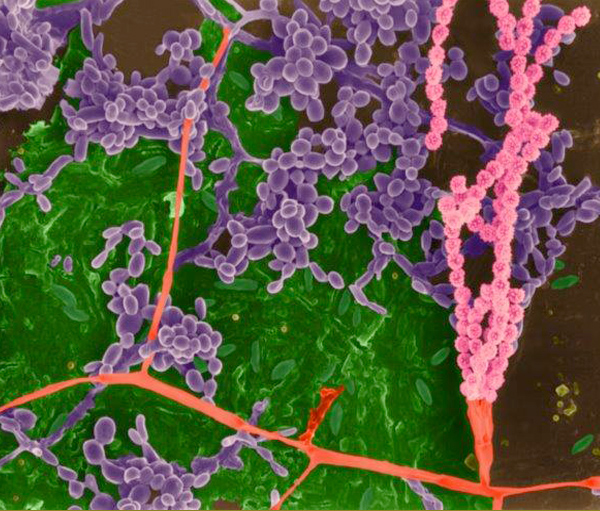
© Dennis Kunkel Microscopy
Home Resources Pathogens Creutzfeldt-Jakob Disease (CJD) - The Human Variant of BSE
Creutzfeldt-Jakob Disease (CJD) - The Human Variant of BSE

© Dennis Kunkel Microscopy
Humans infected by the prion develop a neurological disease called Creutzfeldt-Jakob Disease (CJD) similar to BSE. There are four different variants of the CJD- sporadic/classical, familial, iatrogenic and variant.
What is the incidence of CJD in the U.S. and over the world?
There is approximately one case of sporadic CJD for a million people every year. In the United States this translates to 250-300 new cases every year. See the following charts for more information:
Forms of CJD (click the image for a larger version)
Difference Between CJD and vCJD (click the image for a larger version)
National Prion Disease Pathology Surveillance Center Cases Examined (click the image for a larger version)
Key Messages from Dr. Melvin N. Kramer
- The United States has been concerned and monitoring for all forms of CJD since 1985, and over the past 35 years, we have not had one American contract vCJD.
- From the food safety perspective, the United States has been continually monitoring, assessing and changing firewalls to preclude the introduction of BSE into human food, starting with the feed ban and continuing with SRM removal and other modalities to preclude any transference from a potentially infected animal into human food.
- The United States has done surveillance on cattle since 1990, and with slightly over 300,000 high risk animals tested every year, only one animal has tested positive over the last 14 years, which was epidemiologically linked to a cluster of BSE in Alberta, Canada. Bottom line, as an informed infectious disease epidemiologist, I know that U.S. beef is safe.
Contact EHA Consulting Group today for more information about how we can assist your company.
We offer services for
- Retail Food Safety
- Restaurant Food Safety
- Manufacturers
- Food Trucks
- Drugs & Cosmetics
- Melons & Cantaloupes
- Produce
- Warehouses
- Food Packaging & Packaging Materials


